Best Practice Guidelines: Hospital Patient Administration
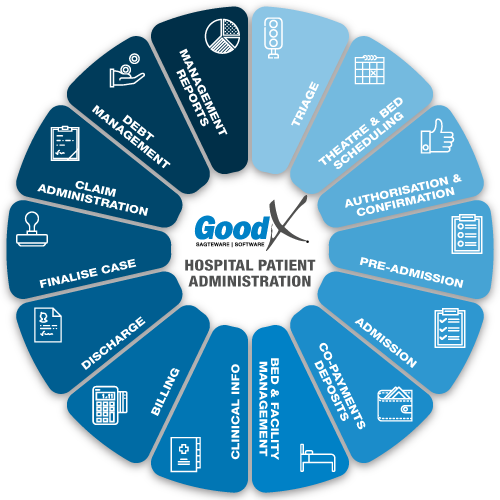
Copyright © 2019 GoodX Software. All rights reserved.
GoodX online Learning Centre
learning.goodx.co.za
9. Bed & Facility Management
Responsible Roles
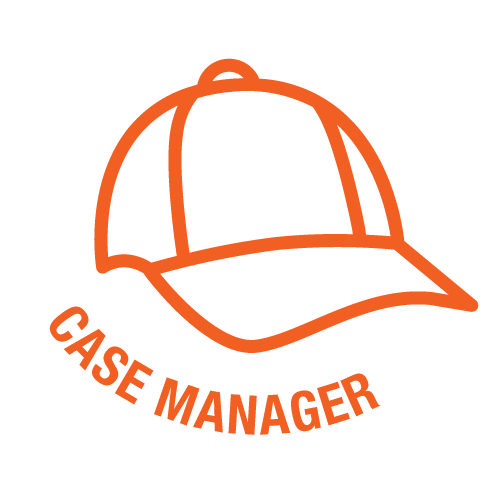 |
Ensure the patient movement in the hospital are up to date on the system. Update the medical aid with the progress of the patient. Check on the patient once a day to be able to give the medical aid an update on the patient status in the hospital. Use the clinical notes and the movement between beds. |
|---|---|
|
|
Supply all the patient stock as requested from the ward or theatre nurses. Communicate with the Stock Controller if any stock has low levels. Ensure the stock items are transferred in a safe and correct way. Ensure the correct personnel have received the stock items on time. |
 |
Check the minimum levels of all stock items and ensure to order the stock as soon as possible. Ensure the hospital are not running out of important everyday stock items. Ensure all emergency stock are available at all times. Check if all orders from the wards and theatres have been billed and sent to the departments immediately. |
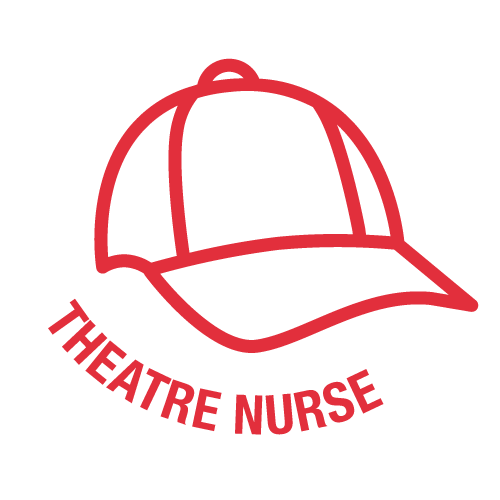 |
Order all stock items from the Main warehouse to be able to operate successfully on the patient in time. Ensure the practitioner have all the applicable stock items according to the procedure that must be performed. Take the patient back to the correct ward after the operation. Communicate with the patient ward nurse all the information they need to treat the patient further and any complications that have occurred in the theatre. Complete all clinical notes in the patient file. |
 |
Ensure that all procedures in the theatre are running according to procedures that were set in place by management. Ensure the correct staff members are allocated to the correct operation that must take place. Ensure the correct stock items in each theatre. Ensure the theatre are efficient and booked according. If a patient did not show up for theatre look for a patient that is on the waiting list to fill the slot. Ensure the practitioners are available for emergency operations. |
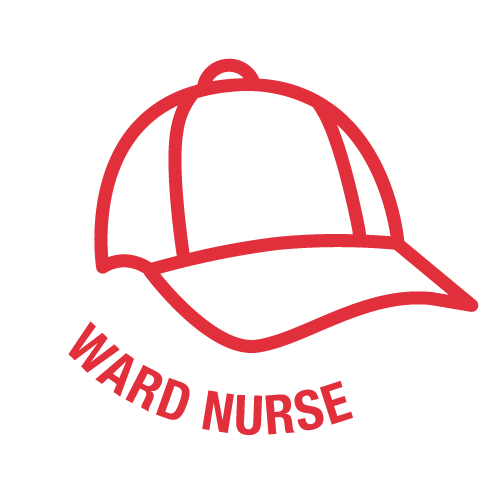 |
Check if all the correct patients are in the correct bed on the system, that reception will be able to allocate new patients to the correct beds. Ensure any movement the patient has been recorded on the system. Prepare the patients for theatre at the correct time. Ensure the patient are not allowed any food or drinks before the patient goes to the theatre according to the time that the practitioner has allocated to the patient. Ensure all vitals are measured at the correct time and recorded in the patient file. Use the recurring service to remind you when the patient must take their medication and any other medical procedures that must take place. For example, drips that must be changed or bathroom rounds. |
|
|
Communicate to the Stock controller for the stock that will be needed in the ward. Check that all tasks have been completed. Handle all complaints from the patients or guests. Assist the nurses with any struggle they might experience. Ensure the correct staff members for the number of patients. Allocate certain responsibilities to the night staff. |
 |
Ensure all allergies of the patient are handle with care and importance. Ensure dietary specific requirements are met at all times. Confirm the in-hospital patients have not been discharged and that the kitchen has an updated list of all the patients with the location, allergies and dietary requirements. Ensure the correct food are delivered on time to the correct patients. Work out the menu for the following week. Ensure enough stock levels for each meal. Check the expiry dates on a regular basis. Keep the fridge at the correct temperature and the storeroom. |
 |
Check on the patient for any infection signs. Communicate with the nurses in each ward and theatres to ensure the patient and ward are clean and no danger signs of infection in the hospital or theatres. Ensure the patients that are in isolation, the correct procedures are in place to treat the patients. ensure the correct patients are in isolation. Ensure any outbreaks are communicated to the hospital manager and the health medical department. If an outbreak occurs follow the correct procedures to ensure the outbreak does not go any further. |
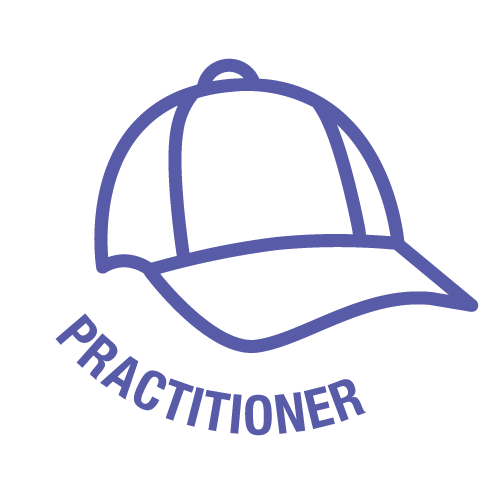 |
Visit the patient on a regular basis. Right any changes on the patient in the file. Check the nurse's clinical notes and make sure the patient is getting the correct medication. Communicate with the nurse on the correct treatment of the patient. Communicate any other treatments the patient will need. Ensure the medication and materials that were used on the patient is completed in the file for billing purposes and stock control. |
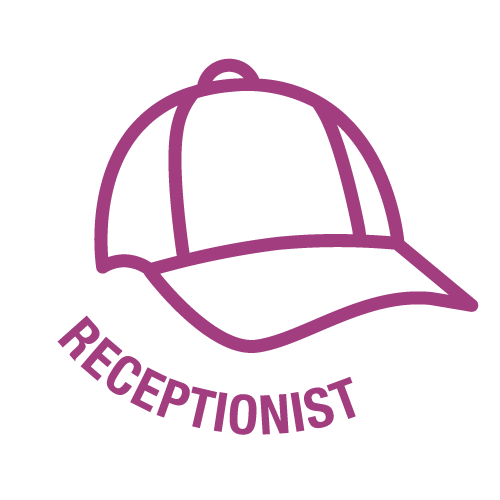 |
Assist the visitors to find the correct patients in the correct wards. Ensure the patient list with the ward and bed have been updates before visiting times. Print extra labels when needed. |
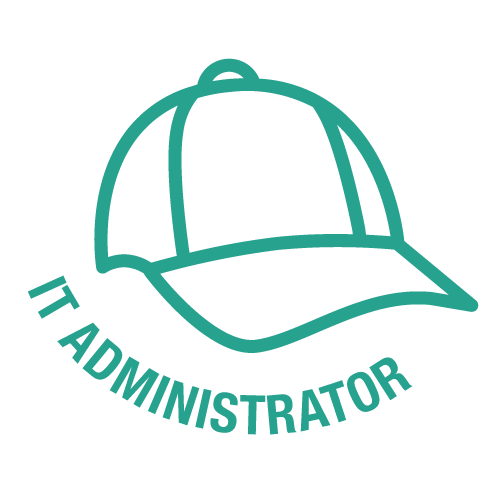 |
Ensure all hardware is in working order and updated. Assist any personnel with hardware or software issues. Order new hardware if necessary after approval from the Financial manager. Ensure internet connection at all times and check the network on a regular basis. Sort any printer issues in the hospital. Must know all software the hospital personnel are using and how to support the personnel. Ensure equipment are being serviced on a regular basis. Ensure updates are done on a regular basis and when the IT Administrator are available to handle any issues. |
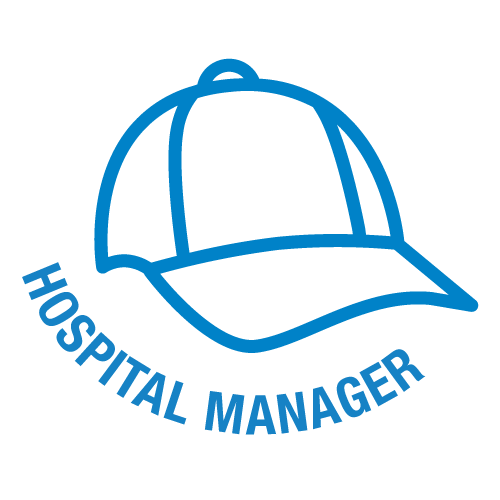 |
Ensure all departments are running smooth. All regulations are followed. All stock can get to the correct places in the hospital. All safety requirements have been met. Communicate with the Ward Manager, Stock Controller and Theatre Manager on a regular basis to ensure there are struggles in their departments. |
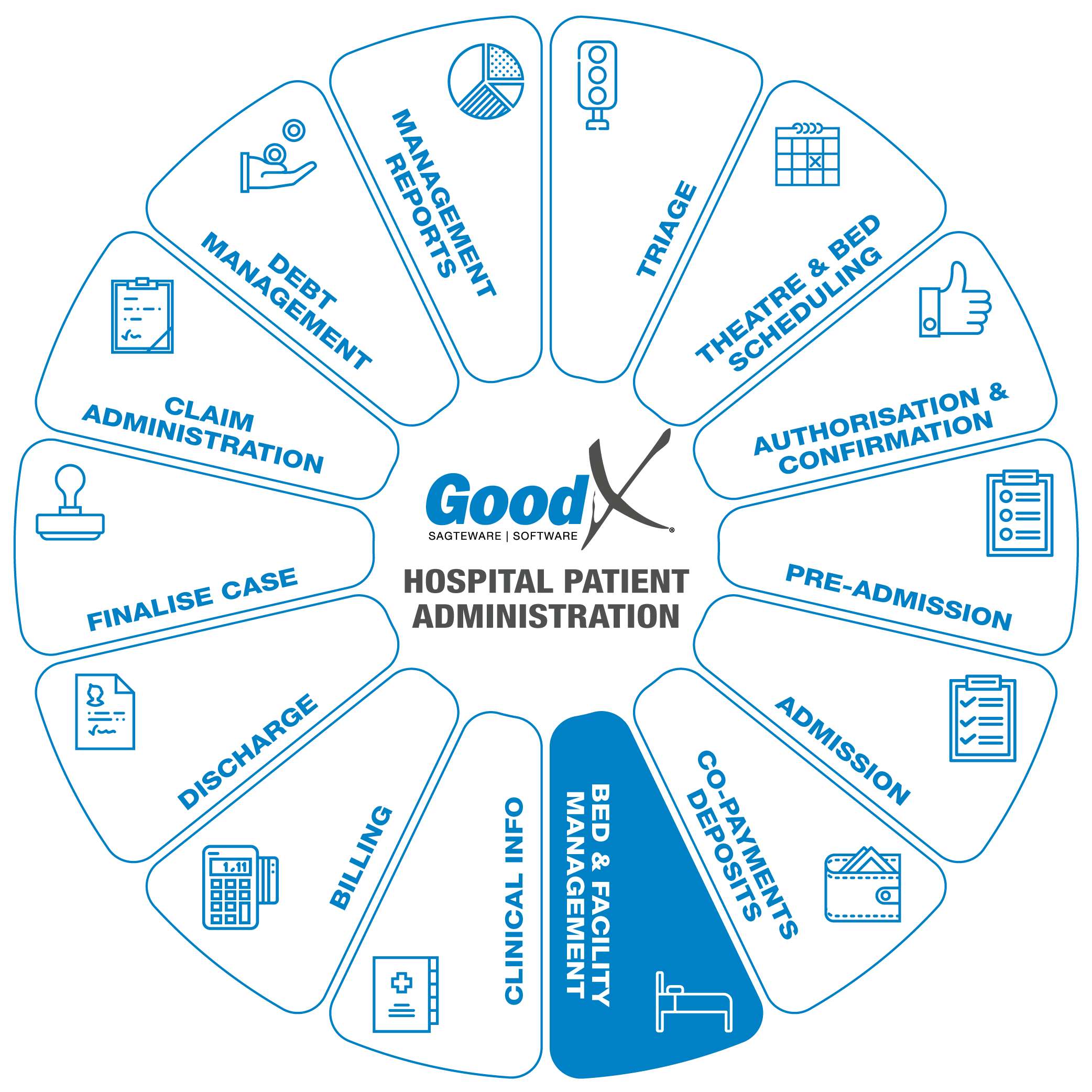 Purpose of Bed & Facility Management
Purpose of Bed & Facility Management
Ensure the facility are running smooth and efficient. Facility management includes the linen, recuring services, bed management, theatre management, stock, repair work and kitchen management. IT Administration for all hardware and software.
Critical Steps of Bed & Facility Management
Bed placement is when you allocated a patient to a fiscal bed and indicate this on a system.
Staff from hospitals both large and small can quickly become burdened by an influx of patients if they are ill-equipped to carry out the patient placement process. The bed access staff is responsible for selecting from among the incoming patients to place and finding an appropriately available bed for that patient.
Bed management is an important step for Disease control in the hospital.
Bed placement will assist in improving the following:
- Overbooking
- The correct treatment according to the bed type and room or ward the patient is in
- Gender-specific wards or rooms to prevent unnecessary claims against the hospital
- Quick and effective query handling of next to kins, Medical Practitioners and Church personnel.
- Minimizing the query queue when you have a bed occupation list in receipt of the hospital
- Assisting the Case Managers to follow up on the patient with the daily bed meetings to give feedback to the medical aid
- Waiting times for admission will shorten
- Streamlining Patient Transportation
- Kitchen management make easier and more effective
- Medicine delivery from the Pharmacy more effective and accurate
- The type of bed will indicate the billing rate
- Assist in automating accommodation billing
- Room or Wards will indicate the state of the patients in that ward and will indicate the security and hygiene levels
- Assist in reporting the patient movement in the hospital
- Disease control
- Linen Management
Important points on a Bed placing system before using the system:
- Make sure the Wards, rooms, beds and bed types are setups in the correct order
- The Wards, rooms and beds must have names everyone in the hospital understands and must be easy understanding for the public
- Bed types must be set up according to the different bed types, for instance, an ICU bed or a Floated bed
- Bed types must be linked to the correct billing code
- The setup will be determined by the hospital speciality and management processes
Some Examples of Wards:
- Male Ward
- Female Ward
- ICU Ward
- High Care ward
- Paediatrics Ward
- Ward A
- Ward B
- Maternity Ward
Some Examples of Rooms:
- Male Room
- Female Room
- Private Room
- Isolated Room
- Room A
- Room B
- Room C
- Mother and Child Room
Some Examples of Beds:
- Bed A / 1
- Bed B / 2
- Giraffe Bed (For children's ward)
- Rabbit Bed (For children's ward)
Some Examples of Bed Types:
- Normal Bed
- High Care Bed
- ICU Bed
- Floated Bed
Reports on Bed Management
Reporting on bed occupation is an important process in the hospital.
The following reports will have an impact on managing the hospital:
- Occupation list - The list will show all the beds that have a patient in them
- Un-occupied list - The beds that have no patients in and can be used for new patients
- Bed Movement - The report will give the movement on the bed or a patient movement between beds.

